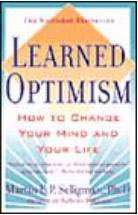"#017b79">
1-The Power of Now:
A Guide to Spiritual EnlightenmentEckhart Tolle

Tolle packs a lot of information and inspirational ideas into The Power of Now. (Topics include the source of Chi, enlightened relationships, creative use of the mind, impermanence, and the cycle of life.) Thankfully, he's added markers that symbolize "break time." This is when readers should close the book and mull over what they just read. As a result,The Power of Now reads like the highly acclaimedA Course in Miracles--a spiritual guidebook that has the potential to inspire just as many study groups and change just as many lives for the better.--Gail Hudson
Book Description
Eckhart Tolle is emerging as one of today's most inspiring teachers. In The Power of Now, a #1 national bestseller, the author describes his transition from despair to self-realization soon after his 29th birthday. Tolle took another ten years to understand this transformation, during which time he evolved a philosophy that has parallels in Buddhism, relaxation techniques, and meditation theory but is also eminently practical.
InThe Power of Now he shows readers how to recognize themselves as the creators of their own pain, and how to have a pain-free existence by living fully in the present. Accessing the deepest self, the true self, can be learned, he says, by freeing ourselves from the conflicting, unreasonable demands of the mind and living "present, fully and intensely, in the Now."2-Changing Minds:
The Art and Science of Changing Our Own and Other People's Minds
Howard Gardner Gardner, a psychologist and professor at Harvard, examines the factors involved in changing minds on significant issues, in politics, science, business, and art. He identifies seven key elements, including reason, research, and real world events, that are part of the decision-making process. Certain facets are more heavily weighted in some fields than others: "leaders of large groups often rely on the appreciable resources at their disposal but are buoyed or undercut by real world events," says Gardner (Frames of Mind), who believes this explains why a politician or a CEO will disregard advice in the face of larger issues and popular perceptions. To prove his theories,Gardner analyzes the behavior of several individuals including President Bush, Britain's Margaret Thatcher and Tony Blair, andSouth Africa's Nelson Mandela.Gardner doesn't limit his examination to politicians because he also believes that artists, writers, musicians and teachers can change people's minds. While the discussions and real-life examples are intriguing and do clarify Gardner's theories, the book doesn't fully deliver on its promise. AlthoughGardner does offer suggestions on how someone can influence others, he doesn't include a detailed prescriptive strategy for decision makers in the business world. Readers must draw out insights on their own, which, given the complexity of the material, may be difficult.
Book Description
Insights into One of the Greatest Mysteries of Human BehaviorMinds are exceedingly hard to change. Ask any advertiser who has tried to convince consumers to switch brands, any CEO who has tried to change a company’s culture, or any individual who has tried to heal a rift with a friend. So many aspects of life are oriented toward changing minds—yet this phenomenon is among the least understood of familiar human experiences.
Now, eminent Harvard psychologist Howard Gardner, whose work has revolutionized our beliefs about intelligence, creativity, and leadership, offers an original framework for understanding exactly what happens during the course of changing a mind—and how to influence that process.
Drawing on decades of cognitive research and compelling case studies—from famous business and political leaders to renowned intellectuals and artists to ordinary individuals—Gardner identifies seven powerful factors that impel or thwart significant shifts from one way of thinking to a dramatically new one.
Whether we are attempting to change the mind of a nation or a corporation, our spouse’s mind or our own, this book provides insights that can broaden our horizons and improve our lives.
3-Learned Optimism:
How to Change Your Mind and Your Life
Martin Seligman 
About two-thirds of this book is a psychological discussion of pessimism, optimism, learned helplessness (giving up because you feel unable to change things), explanatory style (how you habitually explain to yourself why events happen), and depression, and how these affect success, health, and quality of life. Seligman supports his points with animal research and human cases. He includes tests for you and your child--whose achievement may be related more to his or her level of optimism/pessimism than ability. The final chapters teach the skills of changing from pessimism to optimism, with worksheet pages to guide you and your child.--Joan Price In this groundbreaking national bestseller, Martin E.P. Seligman shows you how to chart a new approach to living with "flexible optimism." Drawing from more than twenty years of clinical research, Dr. Seligman outlines easy-to-follow techniques that have helped thousands of people rise above pessimism and the depression that accompanies negative thoughts and build a life of rewards and lasting happiness.Learned Optimismshows you how to:
recognize your "explanatory style" -- what to say to yourself when you experience set-backs -- and how it influences your life
boost your mood and your immune system -- with healthful thoughts
help your children to practice the thought patterns that encourage optimism
break the "I-give-up" habit with Dr. Seligman's ABC techniques
change your interior dialogue and experience the astonishing positive results